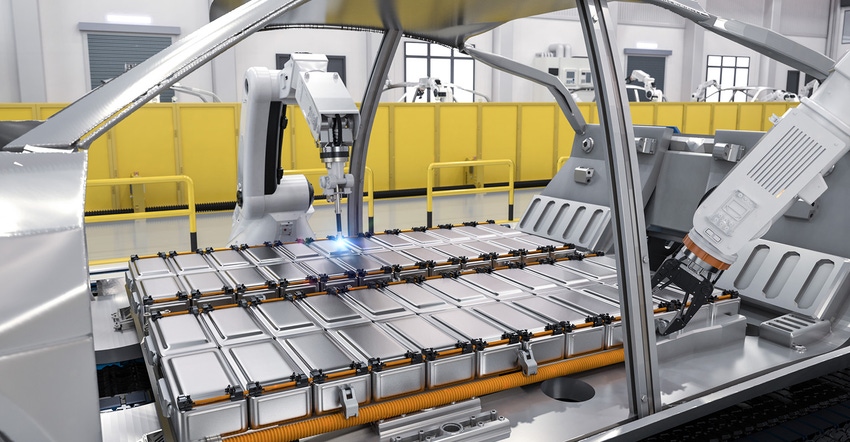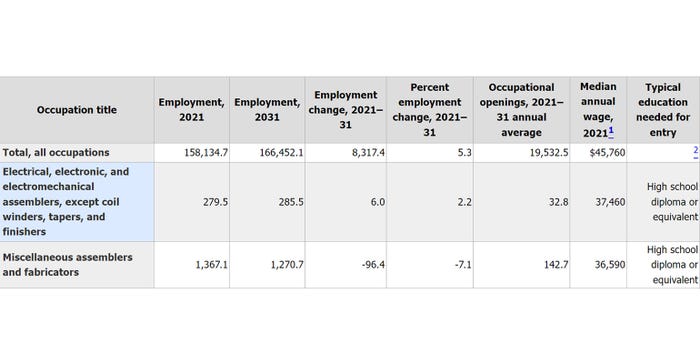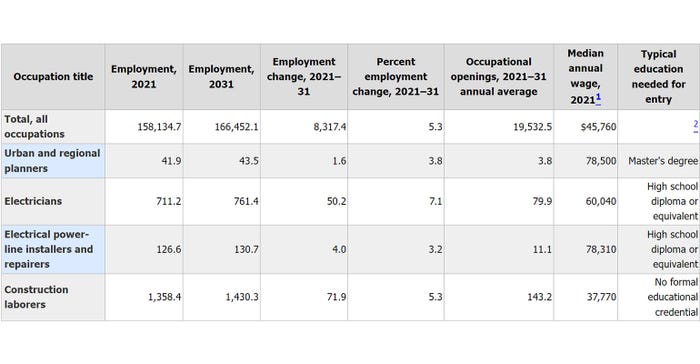BLS: These Jobs Are Critical to the Electric Vehicle Revolutions
The EV market is growing quickly and the US Bureau of Labor Statistics cites these crucial job opportunities associated with the transition to EVs.

As the world faces the pressing challenges of climate change and the urgent need to reduce carbon emissions, the transition to electric vehicles has emerged as a pivotal solution. Numerous occupations have entered the limelight in this transition, driving progress and pioneering change.
From engineers and software developers breaking barriers in electric vehicle technology and skilled technicians ensuring the seamless operation of charging infrastructure to urban planners assessing charging needs in a community, a diverse range of professionals is at the heart of the electric vehicle transition.
According to the Bureau of Labor Statistics (BLS), in an article titled “Charging into the future: the transition to electric vehicles,” the vehicle electrification movement is expected to generate demand for labor in three main areas: the design and development of electric vehicle models, the production of batteries that power them, and the installation and maintenance of charging infrastructure. Here are the findings by BLS:
Design and development of electric vehicles
The process of designing an electric car requires the collaborative efforts of various engineering disciplines. For instance, some engineers focus on creating the vehicle's mechanical components, including the brakes and motor. Others concentrate on devising safety systems, such as blind-spot and collision alert systems, along with the necessary cameras and sensors. Additionally, some engineers specialize in electric battery technologies. Moreover, software developers and other computer experts are pivotal in developing the electric car's software and hardware.
1. Software developers are responsible for crafting computer applications used in EVs, including battery management systems. As EVs evolve and incorporate advanced features like autonomous driving, they will require more frequent over-the-air software updates and upgrades to ensure proper and secure functioning.
The employment outlook for software developers appears promising, with a projected growth rate of 26% from 2021 to 2031, surpassing the average for all occupations. Over the coming decade, approximately 143,400 job openings for software developers are anticipated each year, accounting for growth and replacement needs.
2. Electrical engineers are responsible for developing electric systems and components for EVs, including the motor. Their expertise is also essential for researching and enhancing the performance of vehicle power electronics. Electrical engineers may also contribute to EV battery technology and the design and installation of charging stations.
While the employment growth for electrical engineers is projected to be 1.6% from 2021 to 2031, which is slower than the average for all occupations, there will still be around 12,300 job openings each year, on average, throughout the decade. The demand for these professionals will mainly arise from the need to replace workers who switch to different occupations or retire rather than solely from new job opportunities.
3. Electronic engineers are crucial in developing electric vehicle control systems, advanced driver safety features, and battery management systems. As electric cars adopt new technologies and self-driving features, the demand for sophisticated electronics in these vehicles will increase, making the expertise of electronics engineers vital for automakers to design and test these components effectively.
The employment outlook for electronics engineers looks promising, with a projected growth rate of 6% from 2021 to 2031, which is about as fast as the average for all occupations. Throughout the decade, an estimated 7,800 job openings for electronics engineers are anticipated each year, providing opportunities for professionals in this field.
4. Chemical engineers design processes and equipment for large-scale electric vehicle battery manufacturing, oversee production methods, and direct operations in manufacturing plants. With the increase in EV production, there is already a high demand to develop advanced battery materials and the next generation of batteries with faster charging and higher energy storage capabilities. Additionally, chemical engineers will play a crucial role in developing methods for recycling EV batteries.
Employment of chemical engineers is projected to grow 13.9% from 2021 to 2031, much faster than the average for all occupations. About 2,000 openings for chemical engineers are projected each year, on average, over the decade.

Battery manufacturing
BLS believes that establishing new battery manufacturing facilities will bring out diverse job opportunities, from production workers responsible for assembling batteries to supervisors overseeing the process and managers handling the plant's financial operations. As of 2021, the industry's primary occupations are electrical, electronic, and electromechanical assemblers, along with miscellaneous assemblers and fabricators, including team assemblers, constituting over 30% of the industry's total employment.
1. Electrical, electronic, and electromechanical assemblers build electrical or electronic equipment, such as electric motors, batteries, and sensing equipment. The employment of electrical, electronic, and electromechanical assemblers is forecasted to experience a 2.2% growth rate, below the average expansion across all occupations. On average, approximately 32,800 job openings for these assemblers are projected each year over the decade.
2. Miscellaneous assemblers and fabricators adopt a rotating approach, performing various tasks on an assembly line instead of specializing in a single specific task. Within the other electrical equipment and component manufacturing industry, the employment of miscellaneous assemblers and fabricators is projected to grow by 2.8% from 2021 to 2031.

Charging network development and maintenance
As the EV population grows, there will be a corresponding rise in the need for charging infrastructure. As most EV owners charge their vehicles at home, most charging stations are expected to be installed in residential areas. Electricians, among other electrical professionals, will be responsible for these installations. However, to facilitate the widespread acceptance of EVs, it will be crucial to establish a dependable and accessible public charging network.
According to the BLS’s report, the following is a small sample of the occupations that will be responsible for deploying and supporting the nationwide buildout of EV chargers:
1. Urban and regional planners guarantee the strategic positioning of charging infrastructure. These professionals play a pivotal role in assessing the charging requirements of various communities and efficiently situating chargers across different geographical regions.
Employment opportunities for urban and regional planners are anticipated to grow by approximately 3.8% from 2021 to 2031, which aligns with the average growth rate for all occupations. On average, there are expected to be around 3,800 annual job openings for urban and regional planners over the next decade.
2. Electricians install chargers and their related infrastructure, including electrical wiring and fixtures, at diverse locations such as residences, workplaces, retail areas, and transit corridors. Additionally, they are entrusted with the upkeep and repair of EV charging equipment.
3. Electrical power-line installers and repairers are responsible for installing the lines that link EV charging station locations to the power grid. Moreover, their expertise may be required to enhance existing infrastructure or expand the grid's capacity to handle the elevated electricity demand from the increasing number of EVs on the streets.
Employment opportunities for electrical power-line installers and repairers are expected to grow by approximately 3.2% from 2021 to 2031, which is slower than the average growth rate for all occupations. On average, there are projected to be around 11,100 annual job openings for electrical power-line installers and repairers over the next decade.
4. Construction laborers prepare sites for installing wiring, conduit, and charging units, which may involve concrete removal, trenching, boring, backfilling, and surface repaving after the installations are complete.
The employment outlook for construction laborers is expected to grow by approximately 5.3% from 2021 to 2031, aligning with the average growth rate for all occupations. On average, there are anticipated to be about 143,200 job openings for construction laborers each year over the next decade.

As the electric vehicle industry expands, different professions will assume crucial responsibilities in bolstering its growth and securing its long-term viability, as evidenced in the BLS's article. Together, these efforts will contribute to the widespread adoption of electric vehicles and a cleaner, more sustainable future for transportation.
About the Author(s)
You May Also Like





